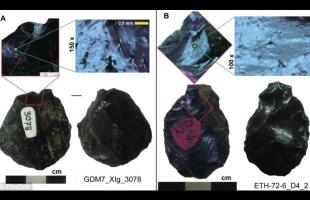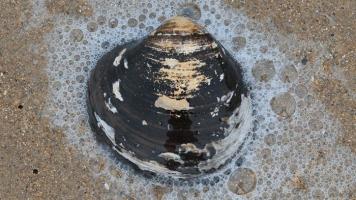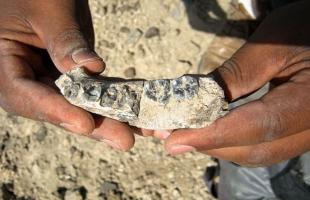Copy Link
Add to Bookmark
Report
Cider Digest #0770

Subject: Cider Digest #770, 27 October 1998
From: cider-request@talisman.com
Cider Digest #770 27 October 1998
Forum for Discussion of Cider Issues
Dick Dunn, Digest Janitor
Contents:
Re: Cider Digest #769, 22 October 1998 (ExeCamra@aol.com)
Unusual yeast behaviour (Andrew Lea)
Yeast choice? (CW)
Pressing questions ("Leo Demski")
re: ATF definition (Dick Dunn)
Send ONLY articles for the digest to cider@talisman.com.
Use cider-request@talisman.com for subscribe/unsubscribe/admin requests.
When subscribing, please include your name and a good address in the
message body unless you're sure your mailer generates them.
Archives of the Digest are available for anonymous FTP at ftp.stanford.edu
in pub/clubs/homebrew/cider.
----------------------------------------------------------------------
Subject: Re: Cider Digest #769, 22 October 1998
From: ExeCamra@aol.com
Date: Thu, 22 Oct 1998 14:21:14 EDT
In a message dated 22/10/98 18:01:02 GMT, you write:
> And what happens in a good year with a lot of fruit sugars when the alcohol
> content goes over 7%? My most recent cider was made with a variety of cider
> apples, dessert apples and crabs, after a hot and dry summer (quite a bit
> of fruit sugar, I don't have the original SG to hand) , and when fermented
> to zero resulted in a 9.something % cider. Presumably any smaller producers
> of vintage ciders are going to have to dilute their product to meet the tax
> office definition!
>
We have that problem in England, where some ciders (particularly
Kingston Blacks and those matured in fresh rum or whisky casks)
can come out well over the 8.5% limit we have. The maker has to
then either water it down or break the law (or pay duty as for wine which
is massively higher). A similar line also exists at 7%, above which the
duty is charged at a higher rate.
------------------------------
Subject: Unusual yeast behaviour
From: Andrew Lea <andrew_lea@compuserve.com>
Date: Thu, 22 Oct 1998 17:09:08 -0400
David Johnson lamented in Digest #768...
>there was a thin layer of white material on the surface
and no activity through the blow off tube. I thought it was mold, but since
I didn't have time to clean it up, I left it for a few days. Now there is
slow activity from the tube.<
I think this is a film yeast, especially if it's at all powdery flaky or
waxy - unusual to get it coming in to a must before the fermenting yeast,
but these things do happen.Yes it's a wild yeast but no, not the sort you
want at this stage. Suggest abandoning this attempt at a 'natural'
fermentation, and now just pitch in an active wine yeast starter and let it
go. You'll not get what you were aiming for, but you should save 5 gallons
of perfectly good juice as it converts into 5 gallons of dry cider. Film
yeasts are slow to spoil and I would guess no lasting damage will be done
if you act now!
Andrew Lea, nr Oxford, UK
http://ourworld.compuserve.com/homepages/andrew_lea
------------------------------
Subject: Yeast choice?
From: CW <cwelch@cais.com>
Date: Thu, 22 Oct 1998 17:05:28 -0400
I'm a relatively newbie brewer ( 4 batches of beer done and 9 meads
underway) and
was wondering if anybody knew of a neutral-flavored yeast with low alcohol
tolerance
that might be good for making ciders ? By low I'm talking about 4.5-9%
Regards,
CW
------------------------------
Subject: Pressing questions
From: "Leo Demski" <leodemski@hotmail.com>
Date: Fri, 23 Oct 1998 11:45:49 PDT
Hello everyone! Thanks for the excellent and often lively discussions
of the fine apple and its' nectar...they have been very illuminating and
useful for my plans...
Unfortunately, I live in South Florida, where no self-respecting apple
grows...We down here must make due with imported domestic apples like
Braeburn, Macintosh, Granny Smith and the like...and worse...there is no
cider that doesn't have the additives and preservatives in it when
sold...Of course, there is the Florida Apple- the orange, but it just
isn't the same....
So I was wondering...I've used Seneca's Granny Smith juice to make a
respectable apple cider, but I'd like to increase the flavour and aroma
complexities as much as possible. A few weeks ago, I purchased an
antique "berry press"- a cast iron press capable of holding about a
gallon of fruit and pressing with a metal screw in a galvanized steel
hopper. It is incredibly strong and sturdy (yet old- dates to the
20's).
My question then is, how much juice yield will I get from a couple of
pounds of apples at a time? Is there a good apple to use for good
cider- especially one that is not too expensive? And if I use a base of
the Seneca juice and blend it with the pressed juice, what can I expect
from the final product? Also, as my intention is to produce a five
gallon batch...are there pressing procedures that you would advise I
follow?
Thanks from any who has answers, I appreciate the time and knowledge!
- -Leo
------------------------------
Subject: re: ATF definition
From: rcd@raven.talisman.com (Dick Dunn)
Date: 23 Oct 98 18:39:34 MDT (Fri)
"McDonald, Rod" <Rod.McDonald@dist.gov.au> wrote in the last digest, regar-
ding the 7% limit on the proposed new category:
> And what happens in a good year with a lot of fruit sugars when the alcohol
> content goes over 7%?...
> ...Presumably any smaller producers
> of vintage ciders are going to have to dilute their product to meet the tax
> office definition!
Agreed.
The definition really could have been made a lot more generous--say 10% abv
limit--as long as it doesn't permit any "boosting" of the strength. In
other words, you can't go adding sugar, fructose syrup, white grape juice,
etc. As long as the starting ingredient is apple juice, period, a limit on
alcohol content is almost academic.
There is a slightly sticky other side to this, though: I've heard that in
a bad year, producers add sugar to the must just to get the alcohol up to
a reasonable level for a stable product. If you want to allow this, so
that producers don't end up shutting down for a year if they can't get
apples with enough natural sugar, it adds more complication. You don't
want to do anything that would encourage producing the "rocket fuel" high-
alcohol barely-apple ciders. Maybe the law could allow as much as 10% for
fully-natural ciders (made only with apple juice, *nothing* else), and 5-6%
for ciders made with added sugars.
- ---
Dick Dunn rcd@talisman.com Hygiene, Colorado USA
...Don't lend your hand to raise no flag atop no ship of fools.
------------------------------
End of Cider Digest #770
*************************
























